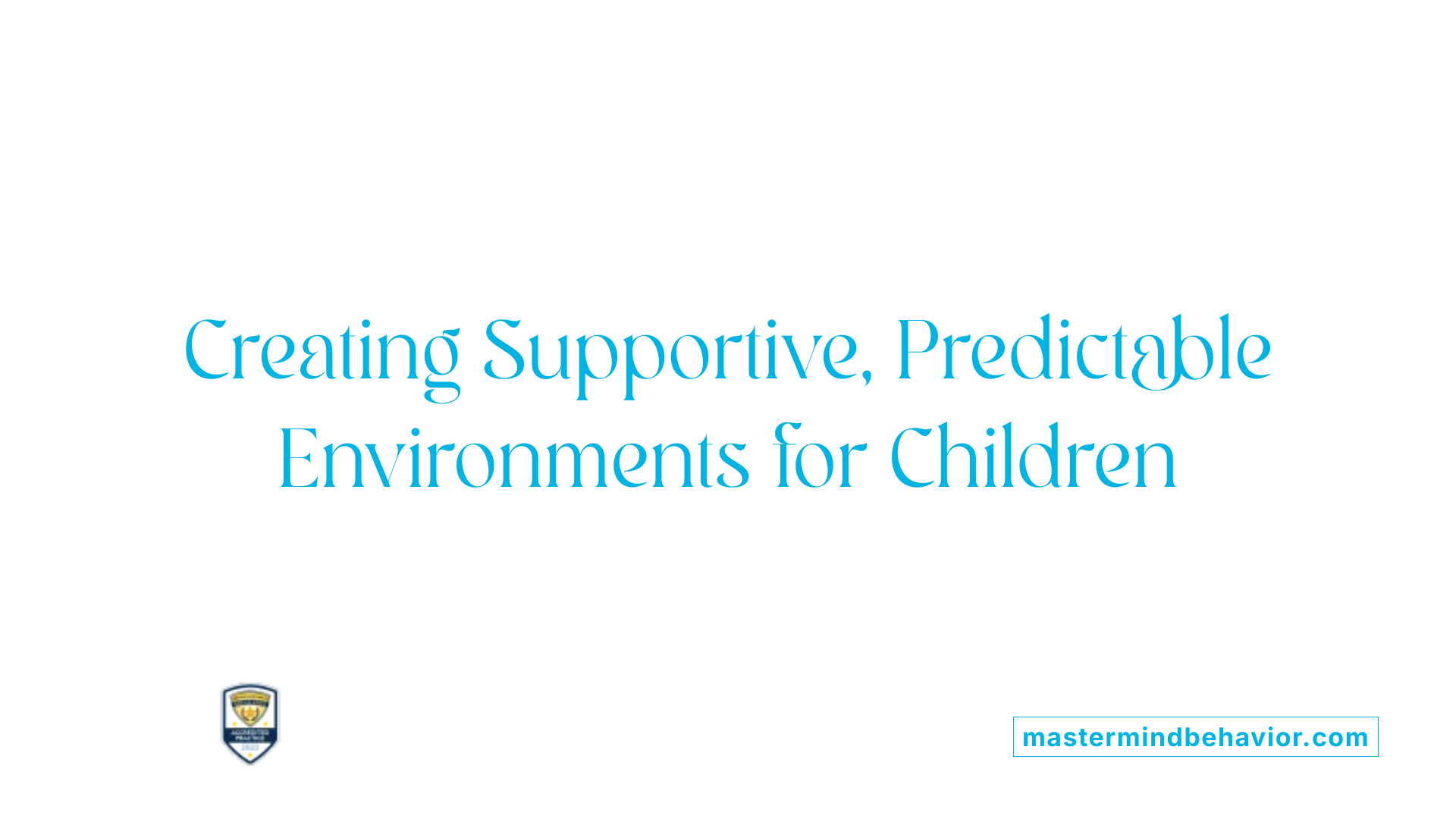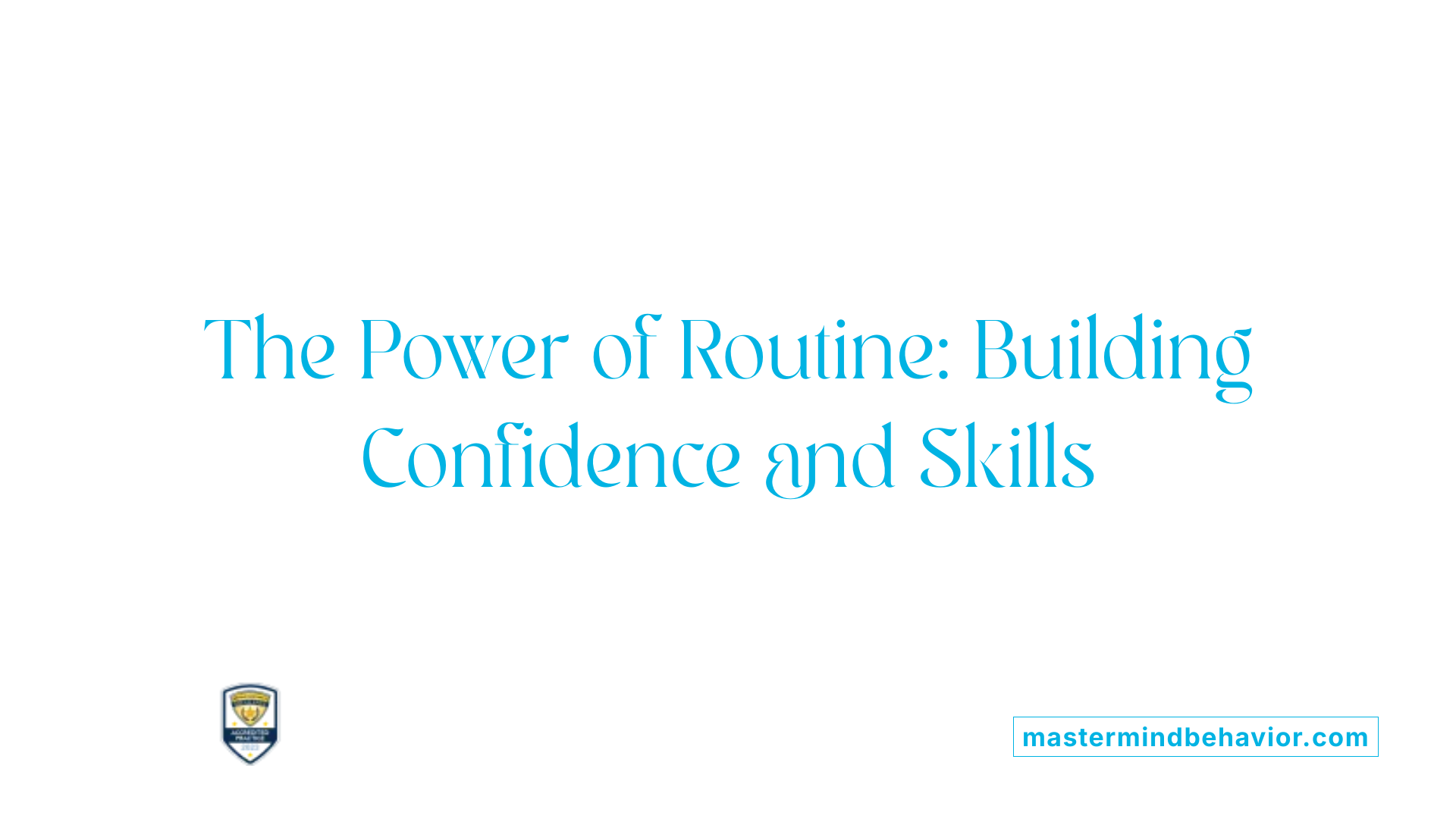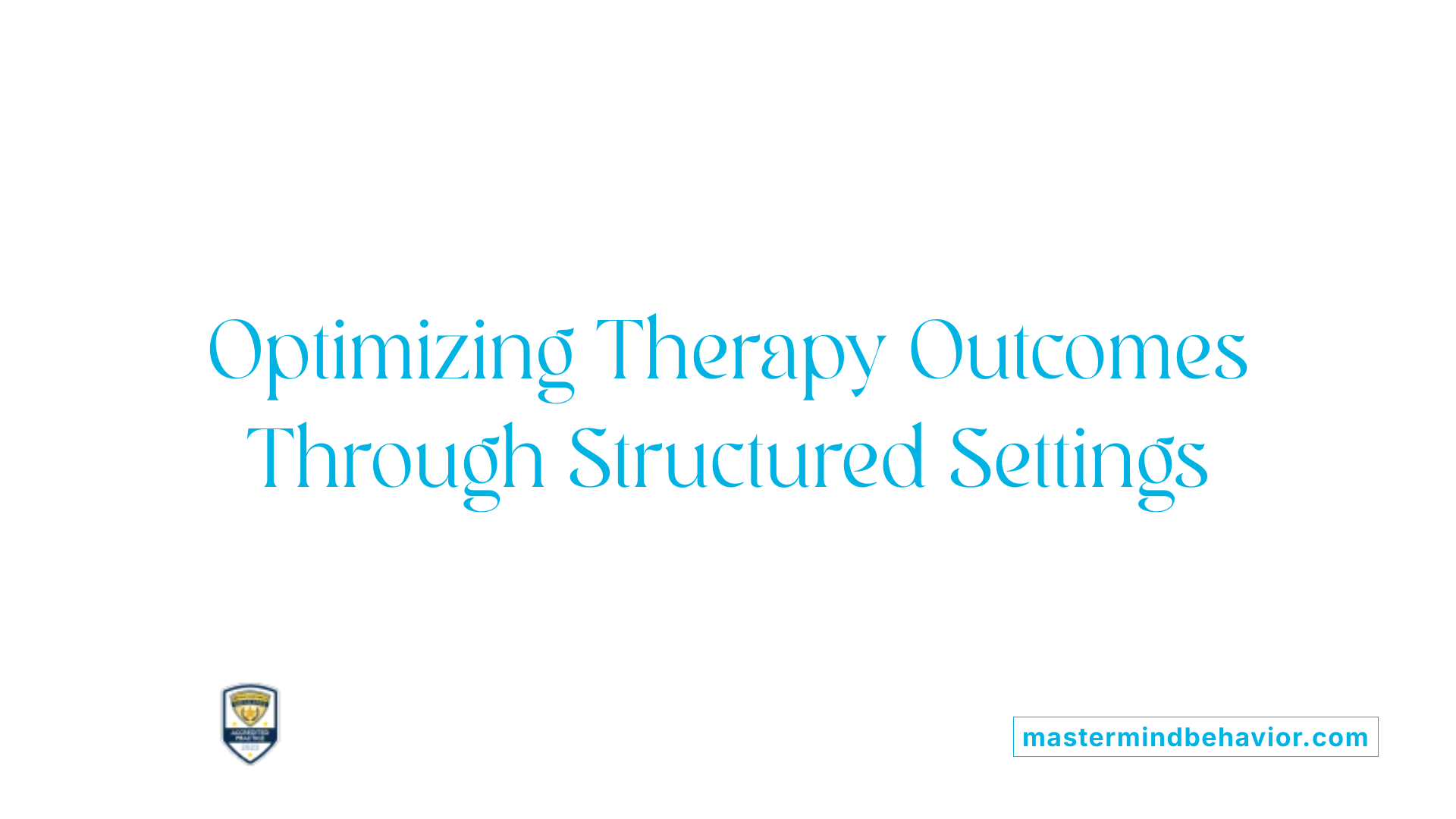Understanding the Significance of Structured Activities in Enhancing Therapy Success
Structured activities are fundamental to effective therapy for children with autism and cognitive disabilities. They provide the predictable, safe, and engaging framework necessary for children to progress in social, emotional, and cognitive domains. This article explores how structured routines and environments contribute to therapy success, the benefits of various structured activities—including play therapy—and their role in fostering social skills development.
The Significance of Structured Activities in Child Therapy
 Structured activities are fundamental in supporting children with autism and developmental challenges. These activities are thoughtfully organized to provide a sense of predictability and routine, which can significantly reduce anxiety and create a safe environment for learning and growth.
Structured activities are fundamental in supporting children with autism and developmental challenges. These activities are thoughtfully organized to provide a sense of predictability and routine, which can significantly reduce anxiety and create a safe environment for learning and growth.
Consistency and predictability are vital because they help children understand what to expect, improving their ability to focus and engage in therapy sessions. Whether through visual supports, sensory integration techniques, or step-by-step instructions, structured activities clarify goals and make complex tasks more accessible.
This organized approach also boosts development by encouraging social interaction, emotional regulation, and cognitive skills. For example, activities like role-playing or art-based play are designed to be goal-oriented, helping children practice communication or problem-solving in a supportive setting.
Moreover, structured play enhances neural connectivity and promotes neuroplasticity—the brain's capacity to reorganize itself. These activities stimulate multiple brain regions involved in sensory processing, learning, and emotional management. As children repeatedly engage in these activities, their brains adapt, leading to improvements in behavior and functional skills.
In summary, incorporating structured routines and activities in therapy creates a stable, engaging environment that fosters growth. When guided by trained professionals and supported by caregivers, these activities empower children to develop essential skills, boosting their confidence, independence, and social cooperation, ultimately improving their overall quality of life.
How Structured Routines and Consistency Enhance Therapy Outcomes

How do structured routines and consistency contribute to the success of therapy?
Structured routines are essential in autism therapy because they create a stable and predictable environment. When children know what to expect, their anxiety levels decrease, making it easier for them to focus and participate actively in therapeutic activities.
Repetition within these routines helps solidify new skills. As behaviors are practiced regularly, they become habits, which makes learning more automatic. This habit formation decreases the need for conscious effort, boosting the child's confidence and ability to apply skills in different situations.
Consistency across various settings and with different caregivers is crucial. When therapists, parents, and teachers apply similar techniques and routines, children can better generalize what they learn. This uniformity reinforces positive behaviors and minimizes confusion or resistance.
Reducing anxiety and emotional stress is another benefit. Routines provide a sense of safety and control, helping children manage their emotions more effectively. This emotional stability encourages participation and makes therapy more productive.
Finally, maintaining consistent practices and schedules during therapy sessions helps build momentum in learning. It strengthens neural connections and ensures that progress is sustained over time. When everyone involved adheres to the same methods, children experience continuous support, which enhances overall therapy outcomes.
| Aspect | Benefits | Additional Notes |
|---|---|---|
| Predictable routines | Reduces anxiety, increases focus | Provides a stable environment |
| Habit formation | Facilitates automatic skill use | Through repetition and reinforcement |
| Cross-setting consistency | Reinforces skill generalization | Applies in home, school, clinic settings |
| Emotional and behavioral stability | Minimizes stress, encourages participation | Promotes motivation and engagement |
| Overall progress retention | Maintains momentum, enhances neural growth | Supports long-term development |
By establishing structured routines and ensuring consistency, therapeutic interventions become more effective. They help children develop new skills, manage emotions better, and build confidence, leading to meaningful improvements in social and emotional functioning.
Exploring the Benefits and Types of Structured Activities, Including Play Therapy
 Structured activities, especially play therapy, play a vital role in supporting a child's emotional and social development. These activities are carefully designed to promote skills such as communication, emotional regulation, and social interaction. Play therapy, in particular, leverages children's natural tendency to play as a way to express complex feelings and process experiences.
Structured activities, especially play therapy, play a vital role in supporting a child's emotional and social development. These activities are carefully designed to promote skills such as communication, emotional regulation, and social interaction. Play therapy, in particular, leverages children's natural tendency to play as a way to express complex feelings and process experiences.
There are different types of play therapy, each tailored to meet specific needs. For example, child-centered play therapy emphasizes creating a safe space where children feel free to explore and express themselves. Directive play therapy involves guidance from a therapist to achieve specific goals, such as reducing aggressive behaviors or improving social skills. Cognitive-behavioral play therapy combines play techniques with strategies to change negative thought patterns.
Activities like art, movement, and sensory experiences are also incorporated into structured play settings. These modalities can help children improve sensory processing, build motor skills, and enhance creativity. Arts and crafts, role-playing, sand tray therapy, and music are popular forms that allow children to symbolically express their feelings and develop problem-solving abilities.
Overall, these structured play activities not only support emotional healing but also facilitate cognitive growth and resilience. They are engaging, safe, and adaptable, making them effective tools for promoting well-being in children facing a variety of emotional, behavioral, and developmental challenges.
| Type of Play Therapy | Focus Area | Goals | Additional Details |
|---|---|---|---|
| Child-Centered Play | Emotional expression | Build trust, self-esteem | Emphasizes child-led activities in a safe environment |
| Directive Play | Specific behaviors | Achieve targeted behaviors | Guided by therapist to meet defined objectives |
| Cognitive-Behavioral Play | Thought patterns | Reduce anxiety, improve coping | Combines play with cognitive restructuring |
| Arts and Sensory Play | Creativity, sensory processing | Enhance imagination, sensory skills | Includes art, music, and sensory activities |
By integrating these structured activities into therapy, children can develop vital skills in a supportive context. The variety ensures that each child's unique needs and preferences are addressed, fostering both emotional and developmental growth.
Impact of a Structured Treatment Environment on Therapy Effectiveness

How does a structured treatment environment impact the effectiveness of therapy?
A well-organized treatment setting plays a crucial role in enhancing the success of therapy for children with autism. Such environments are designed to be predictable and stable, which helps children feel safe and reduces anxiety. When children know what to expect, they can focus better on therapeutic activities, facilitating learning and emotional regulation.
Physical features of these environments include natural lighting, calming colors, and access to nature or outdoor spaces. These elements create a soothing atmosphere that can boost mental health recovery and decrease stress levels. Supportive design features promote relaxation and help children stay engaged.
The social environment is equally important. Privacy areas, communal spaces, and supportive interactions with staff foster social connection and dignity. When children feel supported and respected, they are more likely to participate actively and develop trust, which is essential for therapy success.
Active participation is encouraged through engaging activities tailored to each child's interests, which boosts motivation and resilience. A positive social climate, characterized by cooperation, encouragement, and positive reinforcement, helps children develop social skills and self-confidence.
Overall, a structured environment creates a foundation that promotes emotional safety, encourages active involvement, and supports positive social interactions. These factors collectively improve therapeutic outcomes, helping children achieve better emotional, social, and behavioral development.
The Role of Structured Activities in Developing Social Skills
Why are structured activities important in developing social skills through therapy?
Structured activities play a vital role in helping children with autism develop social skills effectively. They create a safe and predictable environment that makes children feel comfortable while practicing new interactions.
In these settings, children have opportunities for repeated practice of essential social behaviors, such as turn-taking, sharing, and communicating. This reinforcement builds confidence and reduces anxiety around social interactions.
Activities like role-playing, group games, and collaborative projects are carefully designed to teach children about social expectations in an engaging way.
By incorporating visual aids, clear rules, and positive reinforcement, structured activities foster emotional regulation, empathy, and perspective-taking skills. Children learn to understand others' feelings and develop patience.
Peer interactions in these activities also promote social awareness and friendship formation. They help children navigate social situations, understand group dynamics, and develop teamwork skills.
Overall, structured activities provide targeted, supportive opportunities for children to improve their social abilities, making social interactions more manageable and enjoyable.
The Future of Structured Interventions in Child Therapy
As research continues to explore new methods of supporting children with developmental and emotional challenges, the integration of technology presents promising opportunities. Innovative practices such as virtual reality, digital games, and interactive apps are beginning to complement traditional play and therapy approaches. These tools can promote engagement, provide real-time feedback, and allow for customized therapy experiences tailored to each child's needs.
Expanding the application of structured therapy environments into settings like schools and hospitals is another growing trend. In schools, specialized programs help children develop social skills and emotional regulation through group activities, games, and teacher-facilitated sessions. In hospitals, therapy rooms are designed to be calm, predictable, and equipped with various therapeutic modalities, creating a safe space that fosters recovery and growth.
Ongoing research efforts aim to evaluate the long-term effectiveness of these interventions and identify best practices. Studies focus on how structured environments improve consistent skill acquisition, reduce behavioral issues, and enhance overall well-being. As evidence builds, more data-driven approaches will refine strategies, ensuring that therapy remains adaptable and effective for diverse populations of children.
By combining technology, expanding into new settings, and continually assessing outcomes, future directions in structured child therapy interventions promise to offer more accessible, engaging, and personalized support for children’s developmental journeys.
Enhancing Outcomes Through Structured Approaches
Implementing structured activities within therapy for children with autism and cognitive disabilities is essential for maximizing treatment effectiveness. These activities create a predictable and safe environment, facilitate neural development, and promote skill acquisition across emotional, social, and cognitive domains. As research advances, integrating innovative strategies and expanding their application in diverse settings will further improve outcomes, empowering children to reach their full potential.
References
- Play therapy in children with autism: Its role, implications, and ...
- The Importance of a Structured Treatment Environment
- The Importance of Consistency in ABA Therapy: How Routine Builds ...
- Understanding the Role of Play Therapy in Child Psychology
- Building Social Skills Through Structured After-School Activities
- The Importance of Creating Habits and Routine - PMC
- The Power of Routines: 4 Ways Establishing Consistency Supports ...
- The Importance of Consistency in ABA Therapy: How Routine Builds ...
- The Importance of Consistency in Autism Therapy
- Sticking to Your Schedule for Success | Back Bay Speech Therapy









